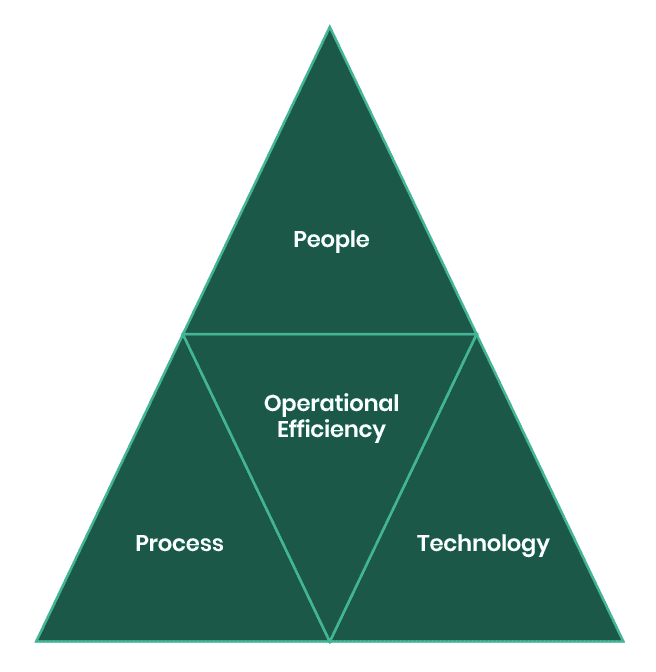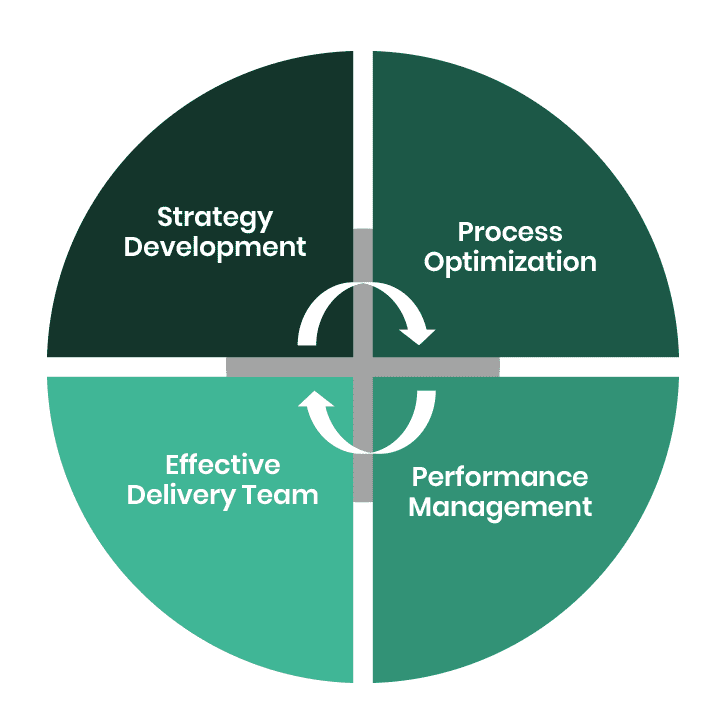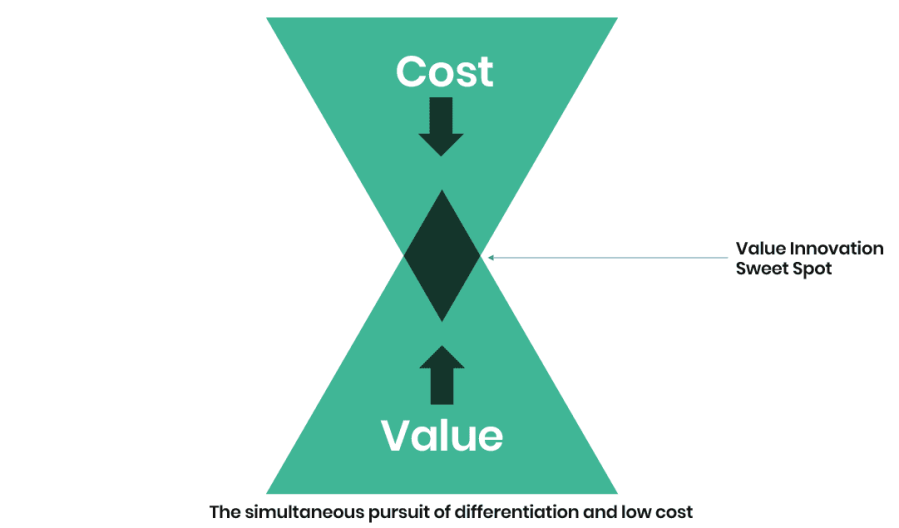The concept of operational excellence is beyond the everyday sets of activities that organisations seem to be working on or pursuing. More simply, it is what an organisation does to ensure that things happen how they ought to and that service delivery is at maximum for improved customer satisfaction and experience.
Organisations driving operational excellence are deliberate, set SMART objectives, and pursue the outcomes over a longer period. The main objective is to break away from old ways of working and effect radical and incremental redesign of processes to achieve dramatic improvements in critical areas of cost, quality, service, and response time through the in-depth utilisation of information technology.
This also depends on the organisation’s people, process, and technology architecture tripod.
People – the bedrock for any successful operational excellence is the people tasked with ensuring an organisation that optimises operational excellence. The team’s success depends on the leadership style in cascading the vision and entrusting the people to innovate and live by the rules.
Process – the chain of interrelated activities or tasks with the end goal of service delivery. The business processes must be streamlined by removing obvious inefficiencies and non-value-adding activities. Organisations attaining operational efficiencies focus on streamlining, reengineering and enterprise transformation, levering appropriate and adequate technology.
Technology – use technology to automate the “AS IS” process to make it happen faster – often wrongly perceived as ‘self-service. Optimise the existing technology architecture.
Building Blocks of Operational Excellence
Achieving Operational Excellence requires successfully implementing a business execution system that effectively and seamlessly integrates the following four building blocks: strategy development, process optimisation, performance management, and effective delivery team.
Strategy Development is focused on developing a deliberate, integrated, and aligned roadmap and business direction that capture the firm’s vision, mission, core values, and discriminating competencies. This also involves the development of a strategy map, business capability framework, and overall execution plan.
Some data have pointed to a lack of appropriate strategy cascade and change management processes as challenges to effective deployment, even as operational goals and objectives are outlined in the strategy document.
Some of these assumptions, according to the “pcl. strategic preparedness survey“, include:
- 69% of business leaders conduct strategy reviews at least once in two years
- While only 9.31% would conduct a study at the end of a five-year strategic period or never
- 40% of businesses adopt top-down strategic formulation processes in determining priorities
- 64% of businesses are satisfied with their strategic planning process
- 50% of businesses are satisfied with the process
- However, 14% are delighted with the strategic planning process
- 36% are either dissatisfied or indifferent to their current strategic development process
- 30 of businesses don’t believe that their strategy was an effective business roadmap
Some of these assumptions, according to the “Balanced Scorecard Collaborative“, include:
- Less than 5% of employees understand the organisation’s strategy
- Less than 30% of organisations link their strategy to budget
- Less than 20% of organisations have clearly defined implementation part
- Many organisations don’t have sustainable change management structures to drive operational efficiency
- 86% of organisations are focused on everyday activities and spend less than an hour reviewing their strategy monthly
Process Optimisation is a chain of related/unrelated activities or tasks combined to achieve a business objective. What enhancements to the channel strategy will result in the most significant increase across the organisation?
This phase will thoroughly rethink all business processes, job definitions, management systems, organisational structure, workflows, and underlying assumptions and linkages. The target is to drive cost optimisation, revenue improvement, quality customer service delivery, and improved business response time. This can be summed up in the value innovation framework.
This fundamentally addresses cost savings by eliminating and reducing the factors an organisation competes on while raising the value proposition and delivery to the buyers /customers.
Source: the blue ocean strategy
Over time, value innovation is achieved at the sweet spot where the scale of economics kicks in due to reduced cost and better value-enhancing sales and business sustainability.
In optimising our processes and ensuring the attainment of value innovation, the organisation must outline and define which factors or processes will be eliminated, reduced, created, or raised. This will help identify the appropriate value curve during performance measurement.
Performance Management as a building block for operational excellence cannot be understated, as what is not measured will definitely not be accounted for.
The key metric for performance management is the balanced scorecard. The balanced scorecard tells you the knowledge, skills, and systems that your employees will need (learning and growth) to innovate and build the right strategic capabilities and efficiencies (internal processes) that deliver specific value to the market (customer), which will eventually lead to higher shareholder value (financials). (Robert S. Kaplan and David P. Norton)
The organisation adopting a balanced scorecard in driving its operational efficiency measures the impact of customer service, communication, and alignment across business units and teams. It is also important to understand the role of a balance scorecard in
- Enabling an organisation to identify the relationship between measures and performance
- Ensuring an effective delivery with a focus on important goals leads to measures and outcomes
- Reducing performance metrics to only key performance indicators for success.
Overall, the operational efficiency building block of a balance scorecard is to ascertain how you qualify before your customers and shareholders while identifying the skills and competencies for implementation and what processes to focus on.
Effective Delivery Team – Many organisations have realised the need to pay adequate attention to their workforce as they define and determine the firm’s operational efficiency. A high-performance team is largely based on mindset, attitude, and organisational culture.
The importance of motivation and open communication cannot be overemphasised, as every high-performing team wants to be heard and rewarded for work done.
Ongoing monitoring occurs through routine managerial activities such as supervision, checklists, comparison, performance evaluations, and reports. Monitoring operational excellence can also occur through internal evaluations (current position assessments, internal audits) or external sources (e.g. comparative analysis, peer reviews, standards survey, etc.).
During the review of initiatives and performance metrics, areas of relapse need to be escalated to responsible leadership and functional heads.
Benefits of Operational Excellence
The benefits of deliberate and continuous operational improvement cannot be overemphasised, as the most likely outcome is quality service delivery and client fulfilment.
Others include:
- Improved execution excellence
- Sustained quality customer service delivery
- Stimulating innovation and creativity which enables ‘intrapreneurship.’
- Promotes speed to market & customer acquisition
At pcl., we have extensive experience and skills in providing bespoke solutions focused on operations transformation, business process reengineering, and optimisation. We have worked with private and public sector organisations spanning diverse industries and geographies.
If you are experiencing difficulties implementing your strategy, call or mail us; let us diagnose your peculiar situation and proffer valuable solutions.
Written by:
Whesu Abiodun
Consultant



